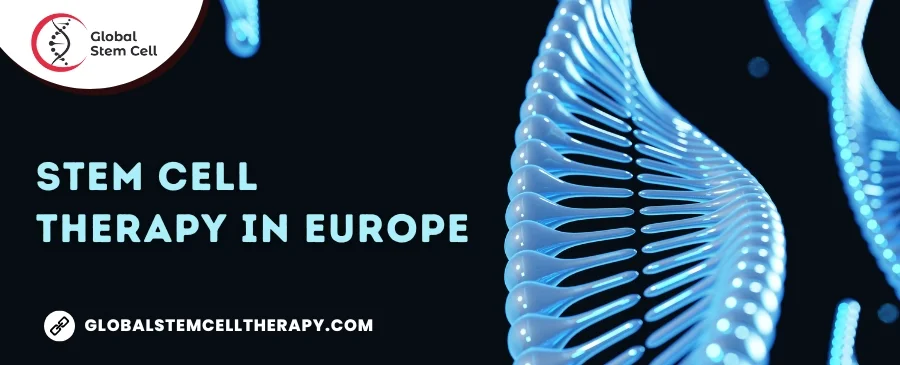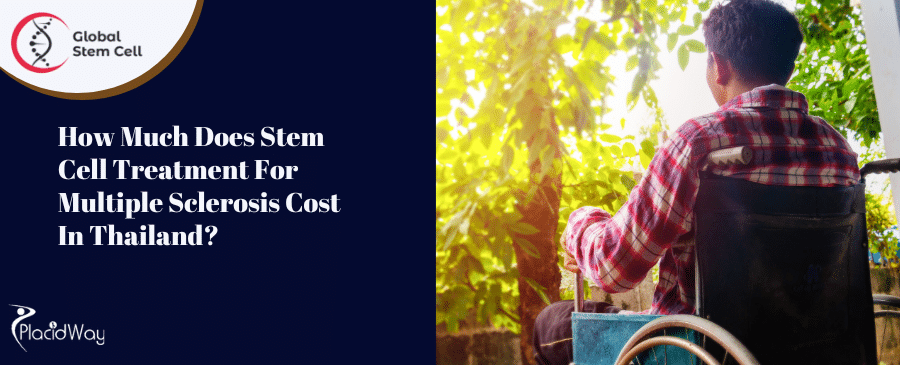
Explore the Landscape of Stem Cell Therapy in Europe
Table of Content
Stem cell therapy stands at the forefront of medical innovation, offering a promising avenue for the treatment of a wide array of diseases and injuries. In Europe, a continent renowned for its advancements in healthcare and scientific research, stem cell therapy has gained substantial traction as a groundbreaking approach to addressing medical conditions that were once considered untreatable.
With its potential to regenerate damaged tissues, repair organs, and combat debilitating disorders, stem cell therapy has captured the attention of medical professionals, researchers, and patients alike across the diverse countries that constitute Europe. As this field continues to evolve and expand, European nations are making significant strides in harnessing the potential of stem cells, both embryonic and adult, to revolutionize the landscape of healthcare and offer new avenues of hope for individuals grappling with previously insurmountable health challenges.
List of Diseases Treated by Stem Cells
Stem cell therapy holds promise for treating a wide range of diseases and conditions by leveraging the regenerative and reparative properties of stem cells. While research is ongoing and outcomes can vary, here is a list of some diseases and conditions that have been explored for potential treatment using stem cell therapies:
- Cancer: Stem cells are being investigated for their role in treating certain types of cancer, such as leukemia and lymphoma, through bone marrow and hematopoietic stem cell transplants.
- Cardiovascular Diseases: Stem cells have shown potential in regenerating damaged heart tissue after heart attacks and in treating conditions like congestive heart failure.
- Neurological Disorders: Stem cell therapy is being researched for conditions like Parkinson’s disease, Alzheimer’s disease, multiple sclerosis, and spinal cord injuries.
- Diabetes: Stem cells could potentially be used to replace or repair damaged pancreatic cells responsible for insulin production in people with diabetes.
- Autoimmune Diseases: Stem cells are explored for their ability to modulate the immune system and treat diseases such as lupus, rheumatoid arthritis, and Crohn’s disease.
- Orthopedic Injuries: Stem cell therapies are being tested for treating joint injuries, osteoarthritis, and cartilage defects.
- Genetic Disorders: Some genetic disorders, like sickle cell anemia and thalassemia, might benefit from stem cell treatments through bone marrow transplantation.
- Liver Diseases: Stem cell therapies are being investigated for liver cirrhosis and other liver diseases.
- Lung Diseases: Conditions like chronic obstructive pulmonary disease (COPD) and idiopathic pulmonary fibrosis are being explored for potential stem cell treatments.
- Eye Disorders: Stem cells could potentially be used to repair damaged retinal tissue in conditions like age-related macular degeneration and retinitis pigmentosa.
- Skin Disorders: Stem cells are being studied for treating burns, non-healing wounds, and certain skin disorders.
- Muscular Dystrophy: Stem cell therapies aim to replace damaged muscle tissue in various forms of muscular dystrophy.
- Spinal Cord Injuries: Stem cells hold promise for regenerating damaged spinal cord tissue and restoring function in patients with spinal cord injuries.
- Stroke: Stem cell therapies are being explored to aid in the regeneration of brain tissue after a stroke.
- Kidney Diseases: Some research is investigating the potential of stem cells in treating kidney damage and kidney diseases.
Cost of Stem Cell Therapy in Europe
Costs can vary significantly based on factors such as the type of stem cells used, the treatment protocol, the clinic’s reputation, the country’s regulations, and additional medical services required. However, I can offer a general overview of potential cost ranges for stem cell therapy in Europe for various diseases:
| Disease / Condition | Approximate Cost Range (EUR) |
|---|---|
| Cardiovascular Diseases | €12,000 – €44,000 |
| Neurological Disorders | €12,000 – €44,000 |
| Diabetes | €12,000 – €44,000 |
| Autoimmune Diseases | €12,000 – €44,000 |
| Orthopedic Injuries | €12,000 – €44,000 |
| Genetic Disorders | €12,000 – €44,000 |
| Liver Diseases | €12,000 – €44,000 |
| Lung Diseases | €12,000 – €44,000 |
| Muscular Dystrophy | €12,000 – €44,000 |
| Spinal Cord Injuries | €12,000 – €44,000 |
| Stroke | €12,000 – €44,000 |
| Kidney Diseases | €12,000 – €44,000 |
Please note that these cost ranges are approximate and can vary based on a multitude of factors. Additionally, these costs may or may not include other associated medical expenses, such as pre-treatment evaluations, post-treatment care, medications, accommodations, and travel expenses.
It’s crucial to research thoroughly, consult with medical professionals, and gather information from reputable clinics before making any decisions about stem cell therapy.
Why Choose Stem Cell Therapy in Europe?
Choosing stem cell therapy in Europe offers a multitude of compelling reasons that make the continent an attractive destination for individuals seeking cutting-edge medical treatments. Here are some key factors to consider:
- Medical Expertise: Europe boasts a rich history of medical advancements and renowned research institutions. Many European countries are at the forefront of medical innovation, attracting top-notch scientists, researchers, and healthcare professionals. This concentration of expertise ensures that patients receive high-quality care and the latest advancements in stem cell therapy.
- Regulatory Standards: European countries generally have stringent regulatory frameworks that ensure the safety and efficacy of medical treatments, including stem cell therapies. This means that treatments offered in Europe often adhere to rigorous quality and ethical standards.
- Diverse Treatment Options: Europe offers a wide range of stem cell therapies catering to various diseases and conditions. Whether it’s neurodegenerative disorders, cardiovascular diseases, or orthopedic injuries, there are specialized clinics and centers that provide targeted treatments.
- Access to Clinical Trials: Europe is a hub for clinical research, and many clinical trials for stem cell therapies take place in the region. This provides patients with opportunities to participate in groundbreaking research and potentially access therapies that are still in the experimental stage.
- State-of-the-Art Facilities: European healthcare institutions are equipped with state-of-the-art facilities and advanced medical technology, ensuring that patients receive treatments using the latest techniques and equipment.
- Multidisciplinary Approach: European healthcare systems often embrace a multidisciplinary approach to treatment. This means that patients benefit from collaboration among various medical specialists, ensuring a comprehensive and holistic approach to their care.
- Global Patient Accessibility: Europe’s well-developed transportation infrastructure and central location make it accessible for patients from around the world. Traveling to Europe for treatment is relatively convenient, with a variety of flight options and well-connected cities.
- Cultural and Recreational Opportunities: Europe offers a rich cultural experience, allowing patients to combine their medical journey with exploring historic sites, enjoying diverse cuisines, and experiencing the continent’s vibrant cultures.
- Language Accessibility: Many healthcare providers and medical professionals in Europe are fluent in multiple languages, making it easier for international patients to communicate and receive personalized care.
- Track Record of Success: Numerous success stories and positive outcomes have emerged from stem cell therapies conducted in Europe, contributing to the region’s reputation as a hub for innovative medical treatments.
Stem Cell Therapy in Europe Success Stories
FAQs about Stem Cell Therapy in Europe
What types of stem cells are used in therapies offered in Europe?
European clinics may use various types of stem cells, including embryonic, adult, and induced pluripotent stem cells. The choice depends on the treatment’s goals, the patient’s condition, and ethical considerations.
Are there any age limitations for undergoing stem cell therapy in Europe?
Age limitations can vary depending on the clinic and the specific treatment. Some therapies might have age restrictions due to potential risks or limited efficacy in certain age groups.
How long does a typical stem cell therapy treatment last?
The duration of treatment can vary. Some therapies involve a single session, while others might require multiple sessions over a period of weeks or months. The medical team at the chosen clinic will provide you with a treatment timeline.
What are the potential risks and side effects of stem cell therapy?
While stem cell therapy is generally considered safe, there are risks associated with any medical procedure. Side effects can include infection, bleeding, and in rare cases, the introduction of abnormal cells. Your healthcare provider will discuss potential risks before treatment.
Do I need to stay in Europe for the entire treatment process?
The length of stay can vary depending on the treatment and its follow-up requirements. Some patients might need to stay for a short period, while others might need to stay longer for monitoring and aftercare.
Can I combine stem cell therapy with other conventional treatments?
Combining stem cell therapy with other treatments is a possibility, but it should be discussed with your healthcare provider. Certain therapies might complement each other, while others might interfere or pose risks.
Ready to explore the transformative potential of stem cell therapy in Europe? Take the first step towards regaining your health and quality of life. Contact us today to learn more about treatment options, renowned clinics, and personalized care plans. Our dedicated team is here to guide you through the process, answer your questions, and help you embark on a journey towards a brighter, healthier future






